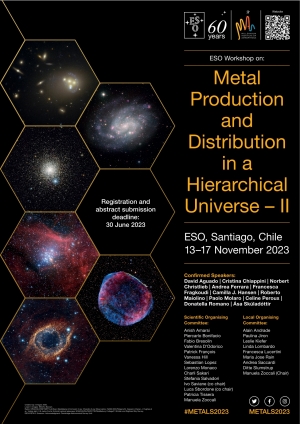Metals trace the full evolution of the Universe: from primordial Helium and Lithium in the big-bang nucleosynthesis to all heavier elements produced in stars and explosive events. Their relative abundances in different environments, and across cosmic time, reveal the underlying star formation history and gas exchange processes. We can now use metal production and distribution to test our ideas of galaxy evolution at many different hierarchical scales: from stellar clusters to clusters of galaxies. The hierarchical build up of present-day structures at different redshifts can also be followed, which goes in parallel with the build-up of stellar and metal mass. These processes are interwoven: during most of cosmic history metal production happens at stellar scales, but metal distribution is effective on spatial scales covering several orders of magnitude. Therefore simulations require exceptional computational power, and tracing metals across cosmic time needs an equivalent investment in observational facilities. Ten years later the original meeting held at Paris Observatory, the time has come to gather the scientific community and discuss the impact of the recent advent of massive spectroscopic surveys (e.g., APOGEE, LAMOST, the Gaia ESO survey, Gaia, GALAH...), the Gaia astrometric mission and the now operative James Webb Space Telescope.
Metal Production and Distribution in a Hierarchical Universe - II
Published: 05 Jun 2023

Important Dates:
- Call for abstract and registration open: 15 May 2023
- Deadline for registration and abstract submission: 30 June 2023
- Program release: End of August
- Deadline for payment of the registration fee: Mid-September
- Workshop dates: 13 - 17 November 2023
More information can be found on the conference website and in social media (twitter, facebook, and instagram).
